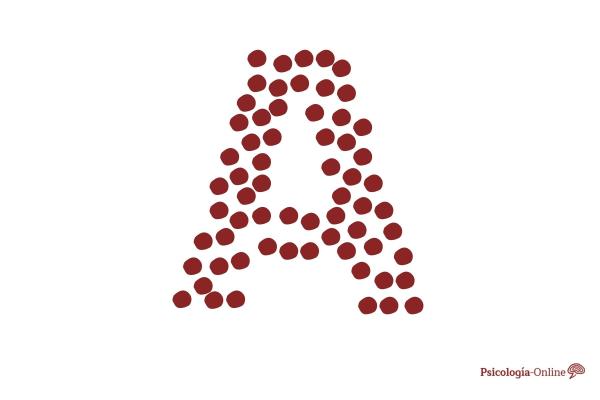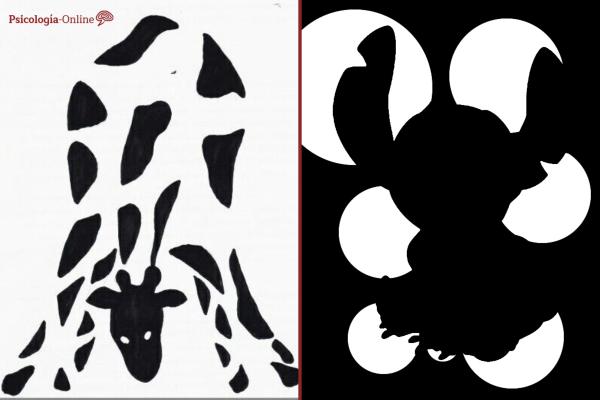
There are different laws to explain some basic principles of the functioning of our everyday world. These laws collect patterns that are frequently repeated (or appear to be repeated) in many different areas. Most of these laws focus on describing simple aspects of life, but they accurately represent what happens to us every day.
Intuition and observation can often lead to detecting patterns that repeat themselves in daily life. Some of these best-known everyday principles are the famous Murphy’s Laws. Although there is no scientific evidence of these laws, it seems that the frequency with which they occur supports them.
These principles that seem to govern everyday reality usually bear the name of the person who formulated them. In today’s article we know Hick’s law, a principle developed by psychologists William Edmund Hick and Ray Hyman in the study of decision making
What is Hick’s law?
Studies have shown that decision-making, like other cognitive processes, does not only involve our reasoning ability. When deciding, different factors intervene, such as previous experience, subjective opinions, feelings and the will of the subject.
But When making a decision, not only factors that have to do with our internal way of processing information intervene ; There are a series of characteristics of the information we receive capable of modifying our decision. Hick’s law relates the complexity of the information received to the response time in decision making.
Let’s say we have to paint our house and we hesitate between white and gray to paint the walls. This decision involves two possibilities and we will take some time to decide. Now we get to the store, and they have five different shades of white and seven different shades of gray. What was initially a simple question now becomes a complex decision process. This scenario is an example of Hicks’ Law.
Hick’s law explains the time it takes for an individual to make a decision based on possible options In terms of results, Hick-Hyman’s law describes a linear increase in reaction time (RT) as a function of the informational entropy of response selection, which is calculated as the binary logarithm of the number of response alternatives.

Thus, the Hick-Hyman law evaluates cognitive information capacity through experiments based on the choice reaction. By increasing the number of options and their complexity, the decision time increases linearly
Information entropy is a concept in information theory that indicates how much information there is in an event. In general, the more certain or deterministic the event is, the less information it will contain. In other words, information is an increase in uncertainty or entropy.
Finally, the time it takes to process a given number of bits in the Hick-Hyman law is known as the “information gain rate.”
History of Hick’s Law
In 1885, J. Merkel discovered that the more elements there are in a stimulus set, the longer the response time This relationship between the number of stimuli and time was discovered by Franciscus Donders in 1868, who observed that as the number of stimuli a person has increases, their reaction time also increases. Subsequently, psychologists noticed similarities between this phenomenon and information theory and began to conduct different research.
Hick designed an experiment to measure this relationship. To do this, he timed study participants how long it took them to say the name of the light after turning it on. In the first experiment there were 10 lights and 10 keys for each of the fingers, each one corresponding to a lamp. Hick stated that as the number of lights increased, the response time was proportional to the logarithm of the number of options.
Hyman wanted measure the relationship of response time as a function of the average number of choices He also used a similar system for his experiment, arranging 8 lights in a 6×6 formation, each labeled with a word. He timed how long it took the participant to say the name once the light was on. Hyman performed many other experiments in the laboratory. Hick determined a linear relationship between reaction time and the amount of information that was transmitted in the experiment.
Applications of Hick’s Law
Hick’s Law is one of the key principles of modern marketing. Furthermore, its practical application is essential in user experience design and video games.
Modern Marketing
If we extend the classic definition of Hick’s law based on sales criteria, we see its usefulness in any sector that involves convincing the user to make a purchase. According to Hick’s law, by increasing the number of options and their complexity, more decision time and, therefore, the less likely a person is to end up buying
There is a well-known study in which participants were given a choice between different jams to buy. One group had to choose between fifteen different varieties, and another group only between three. The study showed that those who had fewer options ended up buying more frequently than those who had more options.
Having to choose between too many options can lead to laziness, apathy and even discouragement The mind has to work harder to process all the options, and if it has a hard time deciding, it simply won’t do it. Instead, keeping things simple (but still offering a good option) can be more successful.
User experience design
To offer a good user experience, it is necessary, first of all, to find out the functionalities that will respond to the user’s needs; Second, guide users to the features they need most. If users end up stuck in the decision-making process, they may become frustrated or leave the website. Hick’s Law is applied in this second stage of user design a series of basic principles are followed to help users navigate the page, including:
Other applications of Hick’s laws
Examples of Hick’s Law can be found everywhere, not just in web and app design. Hick’s law was used to determine the number of controls for microwaves and washing machines. KISS (Keep it Short and Simple) is also a design principle that was recognized in the 1960s for its effectiveness. The US Navy originally used the KISS principle (Keep it simple and direct) and its use spread to many industries. The principle of simplicity is key for a system to work in the best way.
- Related article: “Computational theory of mind: what does it consist of?”
Exceptions to Hick’s Law
Hick’s law is a simple idea, but it has some nuances. In a randomly ordered list, the more items in the list, the longer it will take to find the word you are looking for. Reaction time increases linearly as the number of items in the list increases. But this law cannot be generalized, because other conditions may cause the reaction time to be not linearly linked to the logarithm of the number of elements in the list For example, if the user has already decided what he is going to do before viewing the items, it will take him less time to choose than if he were viewing the items for the first time.
There are other situations where Hick’s Law does not apply, such as when there are so many items that people feel overwhelmed, in which case reducing the number of items can confuse people.
Hick’s law in daily life
In conclusion, Hick’s Law provides us with an important rule when making decisions. As we have seen, the more alternatives available, the longer it takes a person to make a decision. Therefore, a good strategy for our daily lives when making decisions would be to try to limit the available options.
For its implementation, risk analysis is a good way to eliminate alternatives It consists of making a list of all the options and ordering them by risk or how difficult it would be to implement them. You can also indicate which options offer the lowest cost or the greatest benefit. This would considerably reduce the time we spend making decisions in our daily lives.








